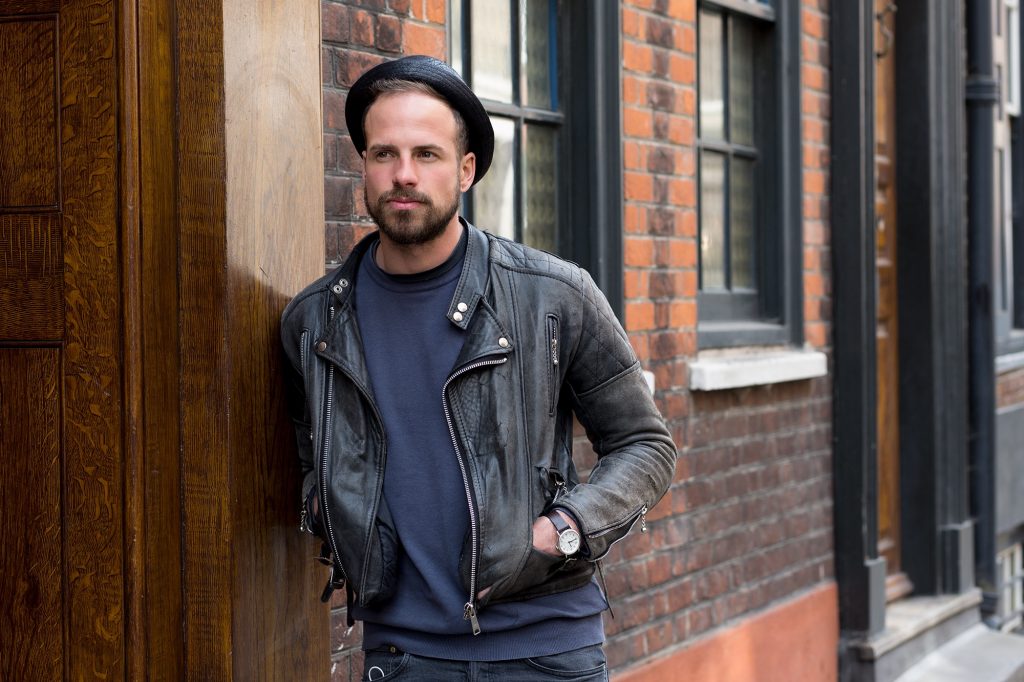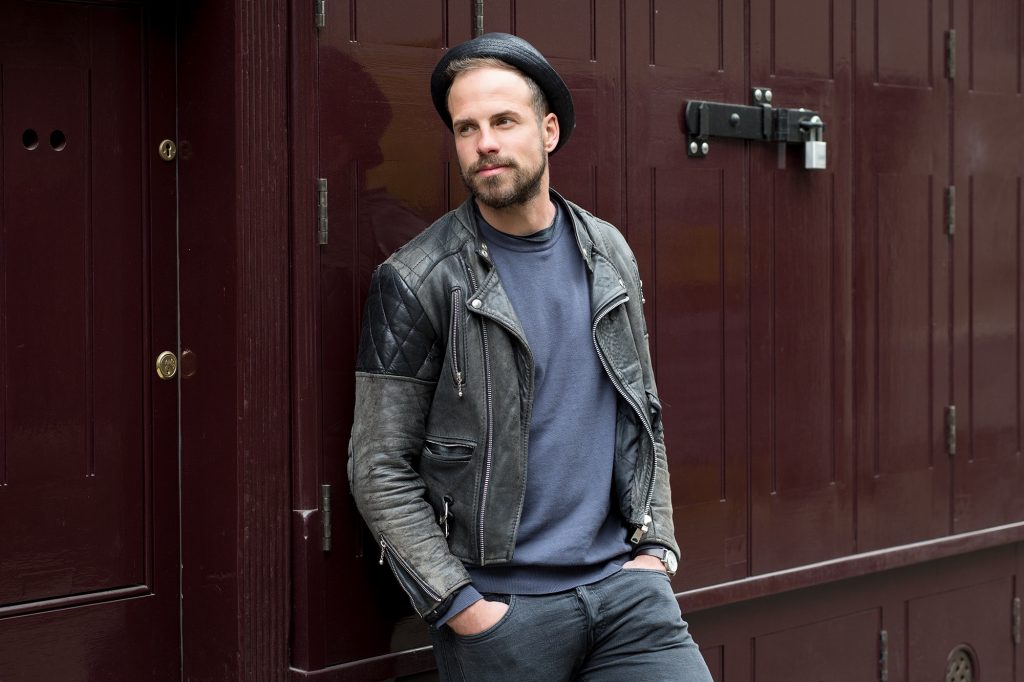
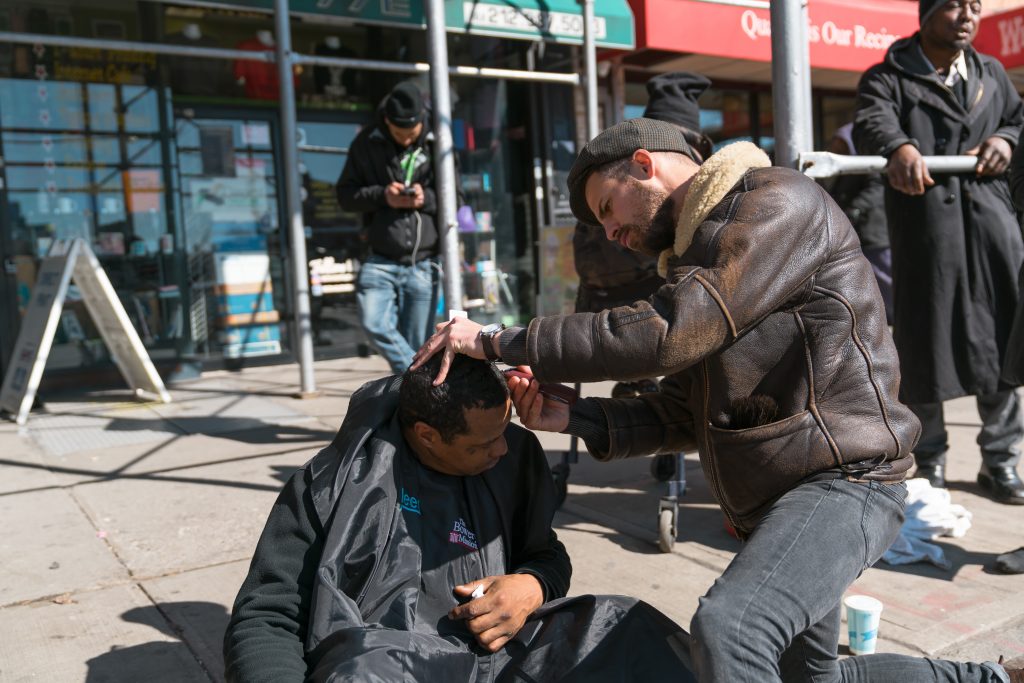

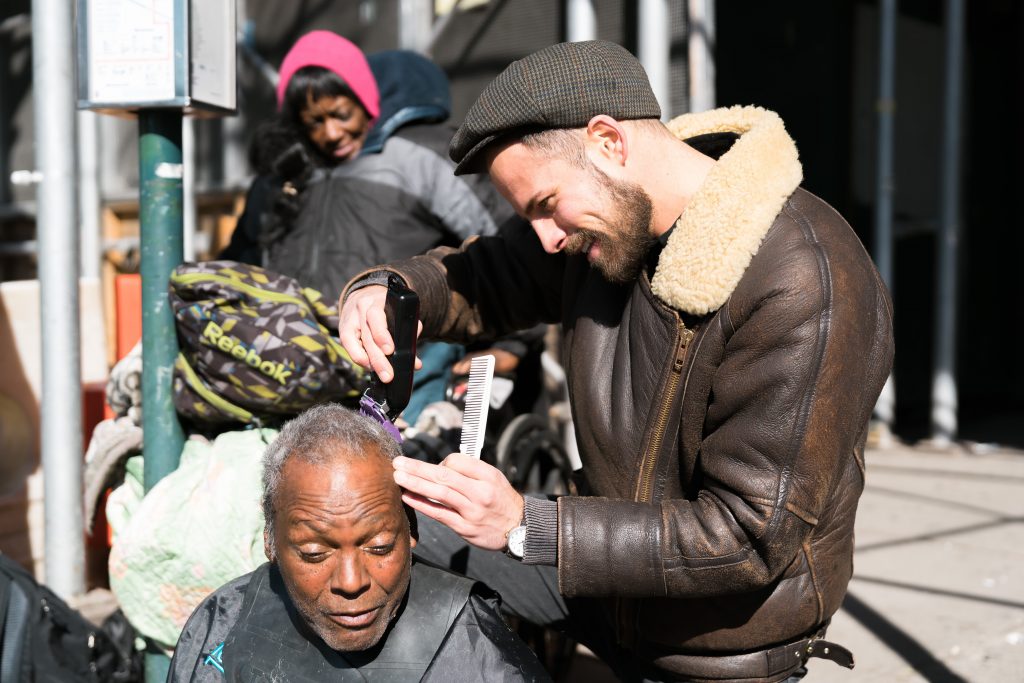
“At the end of the haircut, you see a different person, they smile at you and l really like that,” says Joshua Coombes, founder of #dosomethingfornothing campaign and hairdresser to London’s homeless. Joshua is changing lives with just a pair of scissors, taking his hairdressing skills to the streets and offering free haircuts to the unfortunate to give them more confidence and self-esteem. Joshua shares with me his inspiring story:
Joshua, can you please tell us about yourself and your career? When did hairdressing spark an interest in you?
I started hairdressing at the age of 24 and it was something that l thought about when l was younger. I was playing music for a long time and when l left school, l was in a band group, which allowed me to tour Europe and do different things. Hairdressing is what l wanted to pursue. So one day, l walked into a salon and asked the owner if he would train me and he took me in and started to teach me. I learned the fast track in how to become a hairdresser and working in the salon allowed me to further my skills.
Do you cut both men’s and women’s hair?
Yes! I trained to be both women’s and men’s hairstylist. Men’s hair is something l started working on myself. I started cutting a friend’s hair when l was in a band, even though l didn’t know what l was doing,
What made you decide to cut hair for the homeless and how do you approach them?
My decision was really more having to do something, seeing a problem in every city that l went to. When l traveled to Europe or States, all over the world, there was a big problem, so l had to do something. Talking to people, getting to know about their stories and problems and hairdressing is the best way of getting to know somebody better. So trying to make them feel good, giving a haircut gives them more confidence and self-esteem and making them feel better about themselves which is a big thing.
Do you receive rejections when you offer them a free haircut? What are their usual responses?
Of course l do! Not everyone you approach say yes. It’s like a normal situation when somebody walks into a salon and just wanting a little trim or maybe come back within the year because they don’t want their haircut. When l ask them for a haircut l might get responds like “I’m ok for the moment” because they might be growing their hair, or maybe it’s winter and it’s cold. Before l say l’m a hairdresser, l sit next to them and talk to them for about 15 min and have a conversation. I tell them what l want to do and what l do for other people and if they want a haircut, great, if not, l still talk to them. Some of them ask why you want to help them and haven’t had somebody talk to them that day. It’s a great way to show somebody kindness and like reactions when they see a different person. At the end of the haircut, you see a different person, they smile at you and l really like that.
What is the feeling you get and they express when you have shown them their final hair transformation in the mirror?
It’s my moment! Its a reward. Showing them the final look in the mirror is more of a reward for them then me. I like that moment cause l see what it does for them and they recognise someone that they haven’t seen for a while. It’s a matter of maintenance, making them look after themselves and feeling good. That moment is important. l capture it on social media and write a story to show people for them to see it and read it. It’s important for other people to read it and see the reaction of the homeless person – as it would react to a normal human.
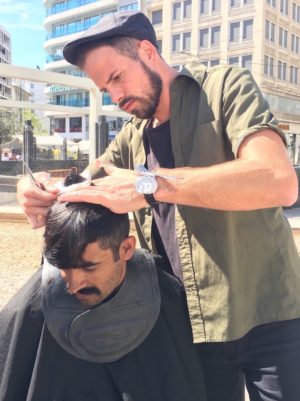 Joshua Coombes cutting a homeless man’s hair on the streets
Joshua Coombes cutting a homeless man’s hair on the streets
“Somebody using #dosomethingfornothing was not used only for the homeless but it’s all about connecting people and using the hashtag and we are looking to set this up as a foundation.”
Are there any heartbreaking or surprising stories they share that have particularly stuck with you while cutting their hair?
Yes, you hear plenty of heartbreaking stories. Growing up in foster care, drug abuse at a early age, people with mental illness just to name a few. Family plays a big role. A story of a man in Paris whom l was talking to was trying to look and connect with his son which he hasn’t seen in 6 years, found out where he was working. This man travelled, ended up being homeless cause he had no money when he was trying to look for his son to find him. He had a big beard when l met him before he was to meet with his son the next day. Timing was really crucial as it made him happier and had tears in his eyes at the end of his haircut and was really beautiful. It’s not about me. Haircut is the vehicle l use to connect with somebody, to listen to somebody about the confidence thing that comes with the haircut, about the role we all play as hairdressers, which is like being there for somebody, which is as important as making somebody feel good.
Where is the strangest place you’ve cut somebody’s hair?
Ranges from park benches to inside burnt out buildings. While l was in Kito – Equador, l set up on a park bench in a square. Where ever you go in the world, homelessness is different. The community responds to it. l was cutting the guy’s hair and people gathered around looking and talking. After that, somebody paid to get his shoes shined and polished, getting his haircut, reading the paper and l thought it may not be the strangest place, but it was a moment like ‘ wow this is crazy where this has lead me, doing this in different places and having these experiences in different parts of the world’. l love it!
Did you receive any negative or positive feedback when you first started being a street hairdresser?
The reason that l chose to do this on the street was to show that anything or something is achievable by anybody. The movement is called #dosomethingfornothing. People stop and say ‘what are you doing?’ l would tell them l am putting out this movement. The feedback l would get from people were 99% positive. They would stop and ask if they could get involved and really love it. It allows the public to talk to the person giving them compliments and great reactions. Only a few reactions from the public was only a concern of sweeping up the hair and look in way of what are you doing. It shows you that people are compassionate. They know homelessness is there and it’s not about raising awareness for me. It’s about how you raise compassion. It’s about others seeing you doing things like that, sharing their stories on Instagram and getting them involved on social media and having a chance to make some changes.
#dosomethingfornothing campaign…how did this come about? What is the inspiration behind it?
Somebody using #dosomethingfornothing was not used only for the homeless but it all about connecting people. How you use your skills, to help somebody doing what you love. When l thought about the hashtag, it has no meaning but is accessible to everybody. When l first started posting, it was slow but we had lots of videos and press. It went viral, had 50-80 k views. The movement has people doing different kinds of acts in different parts of the world. Some are hairdressers. Friends like Heather Bett comes out with me and looks after homeless people’s dogs. A guy in NYC plays guitar to people, makes them smile with a song. We have had people go to old people’s home, just having lunch with somebody and tell an old people’s story because they don’t have any family. It’s all about connecting people and doing it with the hashtag and we are looking to set this up as a foundation. I talk at schools about this and talk to a big group of students on how to use these social media, all these platforms not just for the superficial, not for the other stories but for real human stuff and l think this is an important message for younger people.
What is the best way of raising awareness for your campaign #dosomethingfornothing?
Social media is very important especially from the reaction l have had. People all around the world connect to this. I have received emails from Australia, Korea, Columbia, because there are different parts of the world with different cultures , different lives, but they all connect to this and this shows you it’s about love and humanity. So when this is featured in new places, this always helps but the most important thing is to keep on doing this. I go out a few times a week, post them all, meet people, and you have to be happy doing it and l’m happy doing it.
You also work in a salon, how do you manage your time to cut for the homeless? Is there a specific time during the day you cut their hair?
I worked in a salon in South London, while doing this project. l managed to get a flexible contract which allowed me to go out and cut hair as much as l needed. #dosomethingfornothing is my priority now. Working as a hairdresser and cutting hair is still as important to me, but it’s something that is gradually taking more time doing this as l see the future, and working full time to set this up as a foundation, it will change for me, and setting this up as something that’s here for tomorrow not just today.
Do you think hair relates to a person’s confidence, in this case, the homeless?
Identity is the word l use. Hair plays a big role when somebody has their heart broken whether in movies, films or stories. A new haircut, or somebody working in a new job and they need confidence, a haircut is a big part of your identity and who you are. The people l see, one thing they suffer is lack of confidence, lack of self-esteem. A haircut isn’t going to solve anyone’s problems, but doing this can improve somebody’s confidence. You can give somebody somewhere to sleep, something to eat or anything to survive. Mainly giving them self-esteem and dignity.

How would you describe your signature style?
In hairdressing salon, I really love the unfinished look. Working on the street is different, I make sure that peoples’ hair l cut is short and maintained and easy to work with. Guys l give them shorter looks, as it’s all about maintenance and having a haircut that lasts. I don’t like the polished look but love the styles that have a finished edgy look, which can range from short crops to longer looks. One word to describe it is the unfinished look.
What is the most challenging and rewarding aspects of your profession?
Challenges, not to stay in one mind frame. Hairdressing, it’s a creative thing, always move on, change with what you do. Keep informed what is going on, be inspired, to progress, and change your skills. Rewarding is what l’m doing. Making somebody’s day. You as a hairdresser have the power to change somebody. When they come in the salon and leave an hour later, you have made them feel completely different about themselves, and that’s the most powerful tool. And that’s the reward, whether you do something that l’m doing or working in a salon.
What would you say is the most important lesson you’ve learnt on the course of your career?
Career, l don’t use that word much. I don’t look at myself as having a career. I look at it as life lessons. With hairdressing as a profession, this is the most l’ve learnt. The power to connect with somebody, using your hands and skills to make somebody feel good. The lesson l have learnt from that is what makes us stick more than anything is no matter what we are told, each other is the most important thing, another human is the most important thing in your life and it will always be. Doesn’t have to be relationship. It can be anybody around us. Hairdressing has been a big part of that for me. That’s the lesson l’ve learnt through this. That’s been the life lesson.
You’re also a musician! When and where do you showcase your talent? What instrument do you play?
Guitar and the harmonica and a few different things, but at the moment l don’t play any instruments. I have played in a band and now l just don’t have the time to play, but l do miss it. I played different festivals and gigs in Europe and all over the place and it was amazing. Music and then training to be a hairdresser and now the movement #dosomethingfornothing the movement which has grown enormously every day and takes most of my time. Music is something that never goes away.

The greatest advice l have ever received was…….
Not being afraid to ask. When you need help, look around you. If you need support, you ask for it. Give and take.
The best part of my job is….
Not having to use a pen and pencil….using your hands to be creative and sculpt something. Being creative is the most important thing. The best part is doing it for me and when l do this, l am enjoying it for me. I think whatever you do and it’s for you and you enjoy it, your lucky.
Thank you for taking part in this interview.Is there anything you would like to add or share with our readers that we haven’t covered?
I urge people to get involved in this movement #dosomethingfornothing that can be whatever you want it to be. Use the person is the most important thing. Listening to their conversation. Anybody that feels invisible in society might need a voice. Try and help them and post which can inspire other people, and that’s the most important thing. It’s not about me, all of us and that is what my goal is.
Credits:
Images provided by Joshua Coombes
Interview by Romy
Website: www.dosomethingfornothing.net
Instagram: @joshuacoombes
Facebook: Joshua Coombes

